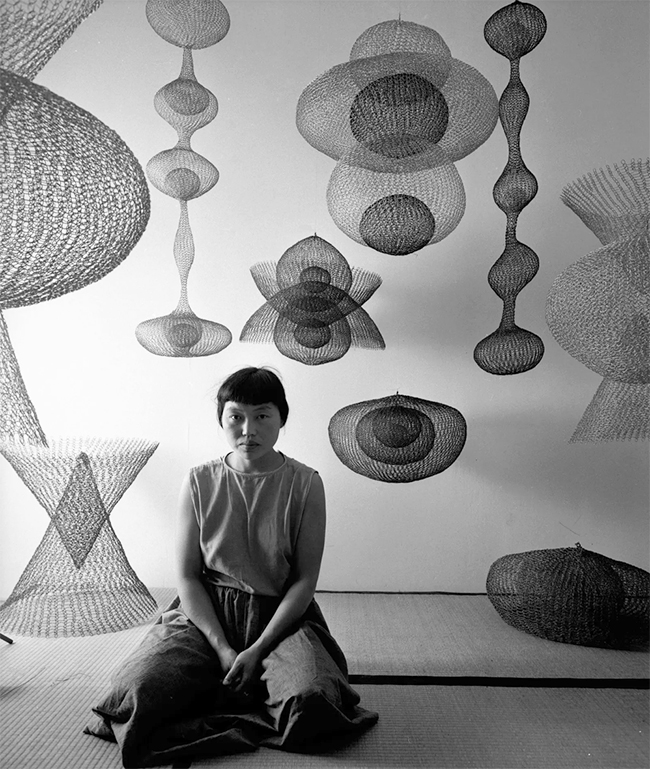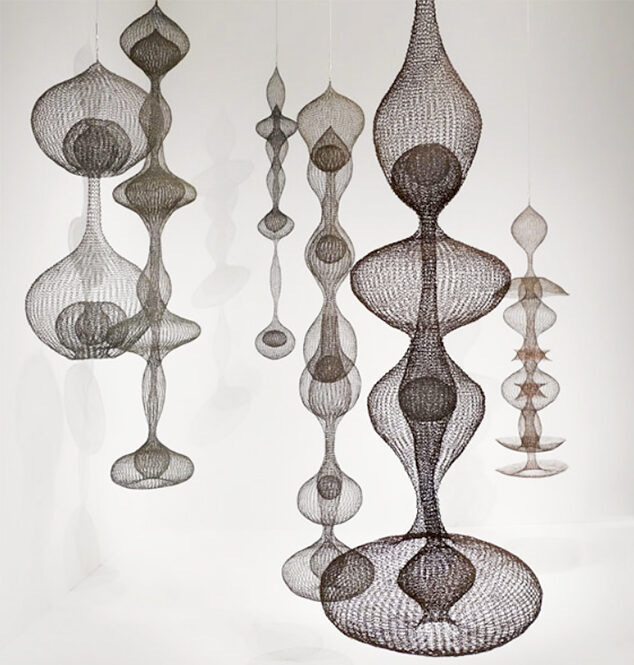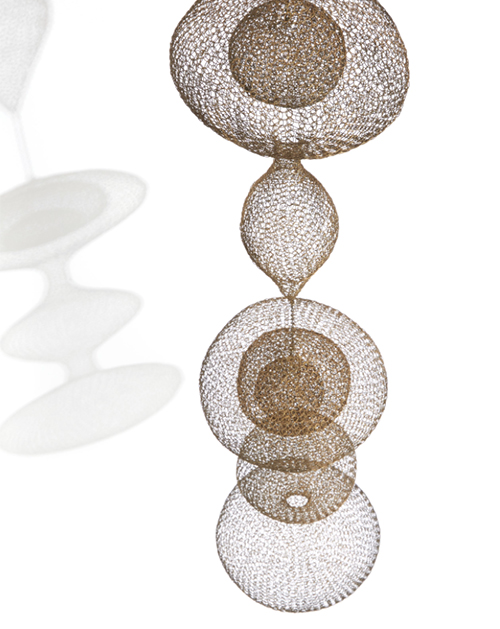Design Visionary: Ruth Asawa
In the realm of contemporary art and design, there are few artists as captivating and influential as California artist Ruth Asawa. Her remarkable journey from an internment camp during World War II to becoming one of America’s most celebrated artists is not just a testament to her talent but also to her resilience and determination. Asawa’s groundbreaking work in sculpture, particularly her intricate wire pieces, continues to inspire generations of artists and designers, leaving an indelible mark on the creative landscape.

Born in 1926 in Norwalk, California, Ruth Asawa grew up surrounded by the agricultural landscape of Southern California. Her early exposure to nature and the rhythms of farm life would later influence her artistic sensibilities. However, her life took a drastic turn when, at the age of 16, she and her family were forcibly relocated to internment camps along with thousands of other Japanese Americans following the attack on Pearl Harbor. Despite the harsh conditions of the camps, Asawa found solace in art, drawing and sketching to cope with the adversity she faced. It was during her time at the internment camp in Santa Anita, California, that Asawa first encountered art classes taught by two Disney animators. These classes sparked her passion for sculpture and set her on a path that would redefine the boundaries of the medium. After the war, Asawa pursued her artistic education at Black Mountain College in North Carolina, where she studied under influential artists such as Josef Albers and Buckminster Fuller. It was here that she began experimenting with wire as a sculptural medium, a decision that would shape her artistic legacy.

Asawa’s wire sculptures are characterized by their ethereal quality and intricate construction. Drawing inspiration from the natural world, she created mesmerizing forms that seem to defy gravity, blurring the line between two and three dimensions. Her innovative approach to materials and form challenged conventional notions of sculpture, earning her widespread acclaim in the art world. One of Asawa’s most iconic works is her series of hanging wire sculptures, often referred to as “looped wire” or “crocheted wire” sculptures. These intricate pieces are created by looping and weaving continuous strands of wire to form delicate, transparent structures. Through her mastery of this technique, Asawa transformed humble materials into works of breathtaking beauty, imbuing them with a sense of lightness and grace. Our Bay Area interior designers have been fortunate to experience Asawa’s wire sculptures in person at the annual FOG Art + Design fair in San Francisco’s Fort Mason Center. It’s extremely difficult to capture the beauty and intricacy of her work in photos so I highly recommend visiting art museums that display her work in their permanent collections such as the De Young museum and San Francisco Museum of Modern Art as well as the Guggenheim and Whitney Museum of American Art in New York.

Beyond their aesthetic appeal, Asawa’s sculptures also carry deeper symbolic significance. Many of her works explore themes of interconnectedness and community, reflecting her own experiences of displacement and resilience. In an interview, Asawa once said, “A single piece of rope can be unwound and made into several smaller pieces or rewoven to create a new form. I kept thinking about the reusing of materials and changing them, as being a very important message.”
Asawa’s influence extends far beyond the realm of fine art. Her innovative use of materials and her commitment to education have had a profound impact on the field of design. In addition to her work as an artist, Asawa was a passionate advocate for arts education, believing firmly in the power of creativity to transform lives. She played a key role in establishing the Alvarado Arts Workshop in San Francisco, California – an experimental arts education program that provided free art classes to children in underserved communities. Today, Asawa’s legacy continues to inspire a new generation of artists and designers. Her work is celebrated in major museums and galleries around the world, and her influence can be seen in the work of contemporary artists working across a range of disciplines. From sculpture to installation art, interior design and architecture, Asawa’s innovative spirit lives on. Interested in reading more about inspirational women in the design world? Check out our Design Visionary post on the renowned modern architect Zaha Hadid.
